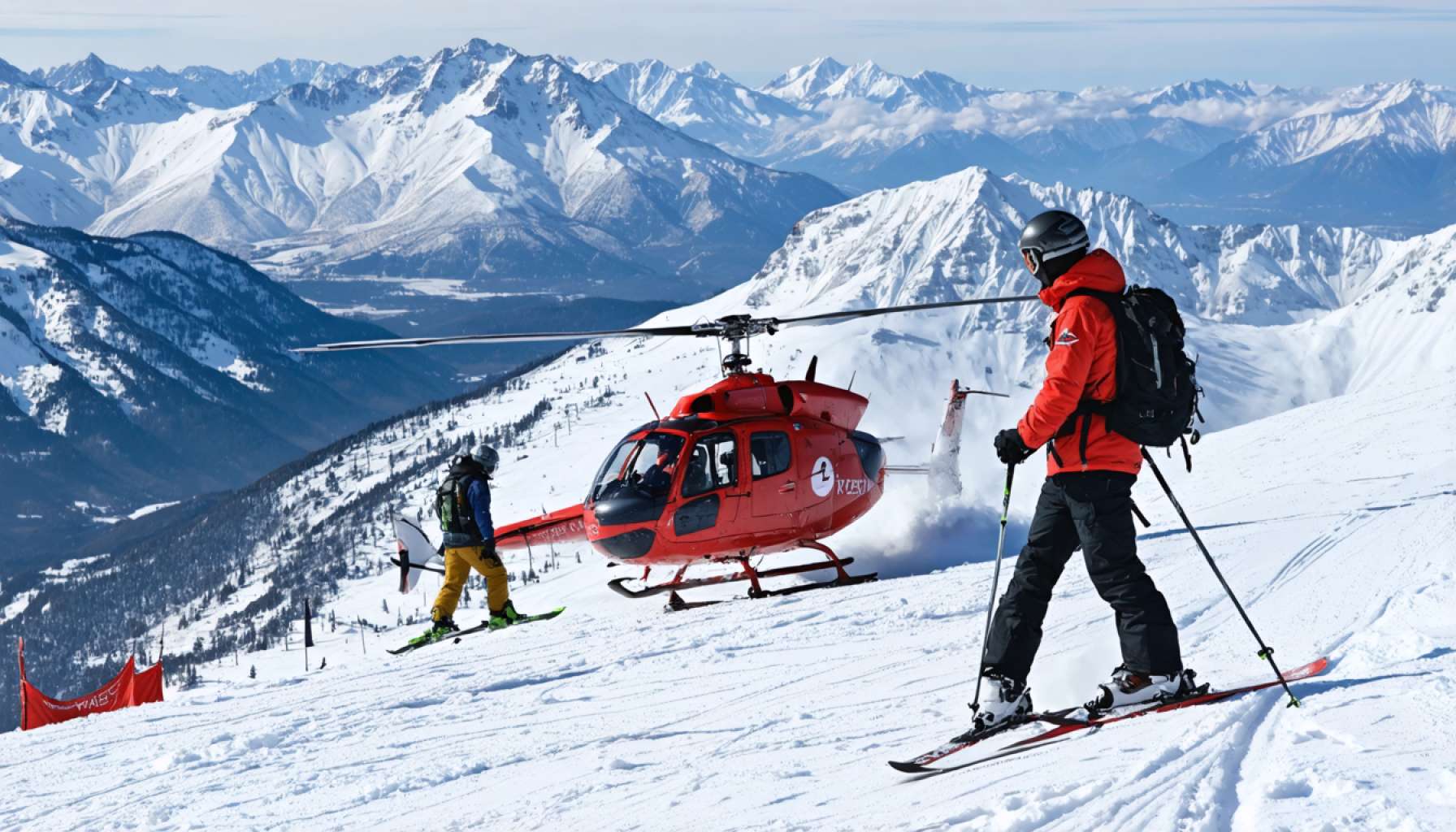- A ski lift malfunction left thrill-seekers stranded in the air at Shiga Kogen ski resort in the Japanese Alps.
- The incident unfolded on a cold February morning, with skiers and snowboarders facing biting temperatures.
- Rescuers executed a delicate two-hour mission, safely bringing all passengers back to ground.
- Though all were rescued, three individuals required additional care to address concerns of hypothermia.
- The event highlights the unpredictability of nature and the importance of preparedness and safety in outdoor adventures.
- Human resilience shines in the face of natural challenges, emphasizing the need for vigilance when relying on technology in wilderness settings.
Amid the serene beauty of the Japanese Alps, an unexpected ordeal unfolded as thrill-seekers found themselves trapped in the air. On a crisp morning at the Shiga Kogen ski resort, the rhythmic hum of the lifts came to an abrupt halt. Suspended above the pristine slopes, the stranded passengers became acutely aware of the biting cold and the ominous promise of hours ahead.
This mechanized beast—an impressive 992 meters of metal and wire—had succumbed to an unexplained failure. Panic did not dominate, but tension suffused the icy February air as skiers and snowboarders awaited salvation.
As the clock ticked, the dedicated team of rescuers, armed with specialized poles, embarked on a delicate mission. They navigated the precarious heights with a steadfast resolve born of necessity and training. It was a dramatic ballet of determination against nature’s frigid embrace.
In two hours, every marooned soul was back on solid ground, the ordeal behind them. However, the mountain had already left its mark. Temperatures gnawed sharply at the endurance of those held captive, and three individuals required additional care, whisked away by ambulance to dispel lingering fears of hypothermia.
While no tragedy befell those caught in this dramatic pause, the episode serves as a stark reminder of nature’s unpredictable power and the indomitable spirit of human resilience. In the dance between technology and wilderness, the elements sometimes take the lead, necessitating a vigilance and respect for safety that must remain paramount. Always be prepared for the unexpected journey.
Stranded in the Alps: What You Need to Know About Ski Lift Safety and Preparedness
How-To Steps & Life Hacks
1. Packing Essentials for Ski Excursions:
– Thermal Blankets: Always carry small, packable thermal blankets that can be lifesavers in cold emergencies.
– Portable Phone Chargers: Make sure to have a fully charged portable phone charger for emergencies.
– Whistle: A whistle can help attract attention if you are isolated or trapped.
– Snacks & Water: Energy bars and a small water bottle can help you stay nourished if trapped for long periods.
2. Understanding Ski Lift Protocols:
– Familiarize yourself with lift safety procedures, often posted at lift stations, including how to brace for sudden stops.
– Participate in ski resort safety briefings, if available.
Real-World Use Cases & Industry Trends
Ski resorts worldwide are increasingly investing in advanced safety protocols and technologies such as:
– Automated Detection Systems: These detect irregularities on the lift line, helping anticipate issues before they cause stoppages.
– Smart Apps: Apps are being developed to alert users of operational issues in real time, providing instructions on what to do if a disruption occurs.
Market Forecasts & Industry Trends
The global ski resort industry is seeing a growth trajectory due to rising interest in winter tourism and sports. According to a report by ResearchAndMarkets.com, the ski tourism market is expected to grow by over 3% annually over the next decade.
Features, Specs & Pricing
– Ski Lift Type & Costs: The cost of building a typical ski lift can range from $3 million to $10 million, depending on the type (e.g., gondola, chairlift). This includes materials, engineering, and construction costs.
Controversies & Limitations
– Environmental Impact: Ski lifts and resorts face criticism for environmental impacts, such as deforestation and disruption to local wildlife habitats, leading to a push for more sustainable practices.
– Technology Failures: Despite advances, technology failures still pose risks, highlighting the need for robust backup systems and emergency protocols.
Pros & Cons Overview
– Pros: Ski lifts offer convenience, time savings, and the ability to access remote slopes easily.
– Cons: They can be prone to mechanical failures and are vulnerable to harsh weather conditions.
Actionable Recommendations
– Stay Informed: Regularly check weather forecasts and lift status before heading to the slopes.
– Dress Appropriately: Layer clothing to protect against sudden drops in temperature.
– Emergency Contacts: Know the emergency numbers for the ski resort and ensure your phone is accessible.
For more on winter sports safety, visit National Safety Council.
Conclusion
Ski lift incidents remind us to cherish both the thrill of adventure and the wisdom of preparedness. Armed with knowledge and appropriate gear, enthusiasts can better ensure their safety, making their winter escapades both exhilarating and secure. Always expect the unexpected and equip yourself to handle it with confidence.
